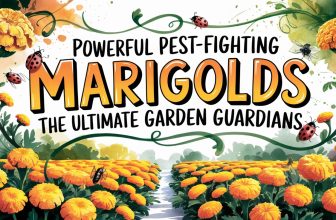Master the Art of Shade Gardening: Expert Tips for a Stunning Garden
Shade gardening is an often overlooked yet rewarding aspect of horticulture, providing a canvas for creating a lush and captivating garden. The interplay of light and shadow calls for a thoughtful and strategic approach, one that takes into account the nuances of plant selection, maintenance, and design.
From understanding the unique light conditions to choosing the right plant varieties and implementing effective maintenance techniques, the key to a stunning shade garden lies in mastering these intricacies.
To unlock the secrets of creating a flourishing shade garden that is both visually striking and sustainable, it is essential to explore the expert tips and insights that can transform a shaded area into a thriving oasis of natural beauty.
Assessing Light Conditions
When creating a shade garden, it is crucial to accurately assess the light conditions in the designated area to determine the suitability of plants for optimal growth. Maximizing shade-loving perennials requires a thorough understanding of the light available.
Choosing the right plant combinations for shade gardens is dependent on this assessment. Observing the garden from different angles and noting the proportion of shade and sun is essential. This information aids in selecting suitable plants for specific locations within the garden.
Selecting Suitable Shade Plants
Selecting appropriate shade plants is essential for creating a thriving and visually appealing shade garden that maximizes the growth and beauty of shade-loving flora. When choosing shade-tolerant perennials, it's important to consider their suitability for the specific light conditions in the garden.
Utilizing different foliage textures can add depth and visual interest to the shaded area. Consider incorporating plants with varying leaf shapes, colors, and textures to create a dynamic landscape.
Additionally, selecting suitable shade plants involves paying attention to the overall aesthetic and ensuring year-round interest with a succession of blooms or changing leaf colors. It's essential to choose plants that not only thrive in the shade but also contribute to the overall beauty of the garden.
Preventing Weed Growth
In establishing a thriving and visually appealing shade garden, it is crucial to address weed growth, as it directly impacts the overall health and aesthetics of the garden space.
One effective method to prevent weed growth is the application of mulch. Applying a 3 to 4 inch layer of mulch around all plants annually not only helps retain moisture in the soil but also acts as a natural weed barrier, reducing weed growth.
Additionally, choosing suitable vegetables for partial shade can also contribute to weed prevention. Vegetables such as arugula, lettuce, bok choy, and herbs thrive in partial shade conditions, occupying the space and leaving less room for weed growth.
Creating Visual Continuity
To achieve visual continuity in a shade garden, it is essential to carefully plan the placement and repetition of plants to create a harmonious and cohesive overall design. This can be achieved by creating color schemes that complement each other and incorporating water features to add visual interest and tranquility to the garden.
Additionally, varying plant heights can add depth and curiosity to the garden, while paying attention to foliage and flowers can contribute to the overall beauty of the shade garden.
Avoiding Invasive Plant Species
When cultivating a shade garden, it is crucial to exercise caution in incorporating plant species, as the inadvertent use of invasive plants can lead to uncontrolled spread and potentially hinder the overall health and balance of the garden ecosystem. By avoiding invasive plants and opting for native species, the benefits to the garden are numerous. Native plants are well adapted to the local environment, requiring less maintenance and watering once established. Additionally, they provide essential habitat for local wildlife and support biodiversity. Proper maintenance of a shade garden, such as regular weeding and soil amendment, is integral in ensuring the vitality of the garden while avoiding the detrimental effects of invasive species.
| Benefits of Native Plants | Proper Maintenance of Shade Garden |
|---|---|
| Well-adapted to local environment | Regular weeding and soil amendment |
| Require less maintenance and watering | Integral for ensuring garden vitality |
| Provide essential habitat for local wildlife | Avoid detrimental effects of invasive species |
| Support biodiversity | |
Enhancing Soil Quality
Enhancing soil quality is crucial for maintaining the health and vitality of a shade garden ecosystem. When amending soil, it's essential to choose the right amendments to provide essential nutrients and improve soil structure. Incorporating organic matter offers numerous benefits, including enhanced water retention and increased microbial activity.
Soil testing plays a vital role in understanding the current state of the soil and its specific requirements. It's important to recognize the significance of testing soil and to understand how to interpret soil test results accurately. By conducting regular soil tests, gardeners can make informed decisions about the necessary amendments and adjustments to ensure optimal soil quality for a thriving shade garden.
Designing for Visual Interest
Designing a shade garden for visual interest involves strategically selecting and arranging plants to create an aesthetically pleasing and captivating landscape. Using contrasting foliage can add depth and diversity to the garden, creating a visually appealing display.
Incorporating focal points such as unique sculptures, specimen plants, or decorative structures can draw the eye and create visual interest. By varying plant heights and carefully considering foliage and flowers, the garden can offer an ever-changing and dynamic experience.
Additionally, adding year-round interest through the selection of perennials and shrubs with a succession of blooms or changing leaf colors ensures that the garden remains visually engaging throughout the seasons. These design elements contribute to the overall beauty and allure of a well-planned shade garden, creating a space that is both visually stimulating and harmonious.
Frequently Asked Questions
How Can I Incorporate Edible Plants Into My Shade Garden?
Incorporating edible plants into a shade garden involves selecting shade-tolerant vegetables like arugula, lettuce, and bok choy. These can thrive in partial shade conditions.
Additionally, consider pollinator-friendly edibles such as herbs and mustard greens.
Edible groundcovers like strawberries can also be utilized.
Are There Any Specific Techniques for Controlling the Size and Shape of Evergreen Plants in the Shade Garden?
Pruning techniques are essential for controlling the size and shape of evergreen plants in shade gardens. Candle pruning, performed by cutting off at least half of the new growth in late spring, helps to maintain smaller sizes and encourages denser growth. It's a valuable method for managing evergreens in shaded areas.
Additionally, regular pruning and shaping can help control the overall size and appearance of evergreen plants in a shade garden, ensuring they complement the garden's aesthetic.
What Are Some Creative Ways to Add Year-Round Interest to a Shade Garden, Beyond Just Flowers and Foliage?
To add year-round interest to a shade garden beyond flowers and foliage, consider incorporating elements like:
- Shade garden design and color schemes
- Sculptures and art pieces that can stand out in the shaded areas
- Strategic lighting to enhance the garden's ambiance
Utilize creative design concepts to add visual appeal. For example, integrating sculptures or art pieces that can stand out in the shaded areas. Additionally, strategic lighting can enhance the garden's ambiance, illuminating key features and creating an enchanting atmosphere even in the shade.
Can You Provide Some Tips for Creating a Low-Maintenance Shade Garden That Requires Minimal Upkeep?
Creating a low-maintenance shade garden that requires minimal upkeep involves strategic soil preparation and mulching.
Amending the soil with compost and triple mix ensures essential nutrients for plant growth.
A 3-4 inch layer of mulch annually retains moisture and acts as a natural weed barrier.
Companion planting and container gardening can reduce maintenance by creating self-sustaining ecosystems and minimizing invasive plant spread.
These practices contribute to a visually appealing and easy-to-manage shade garden.
Are There Any Specific Recommendations for Incorporating Natural Elements, Such as Rocks or Water Features, Into a Shade Garden?
When incorporating natural elements like rocks or water features into a shade garden, consider them as design inspiration for DIY projects.
Natural elements can add depth and visual interest to the garden. Rocks can be arranged to create pathways or borders, while a small water feature like a fountain or a pond can introduce a calming ambiance.
Such elements should complement the existing plantings and contribute to the overall aesthetic of the shade garden.
Conclusion
In conclusion, mastering the art of shade gardening requires a strategic approach and deep understanding of plant varieties, light conditions, and maintenance techniques.
By assessing light conditions, selecting suitable plants, preventing weed growth, creating visual continuity, avoiding invasive species, enhancing soil quality, and designing for visual interest, garden enthusiasts can create stunning and flourishing shade gardens.
With the knowledge and skills provided in this comprehensive guide, both seasoned gardeners and novice enthusiasts can achieve success in shade gardening.
Disclaimer: GardeningNorm is a participant in the Amazon Services LLC Associates Program and may receive a commission if you purchase a product via a link on this page.. However, this does not impact our reviews.Read the full disclosure here.



